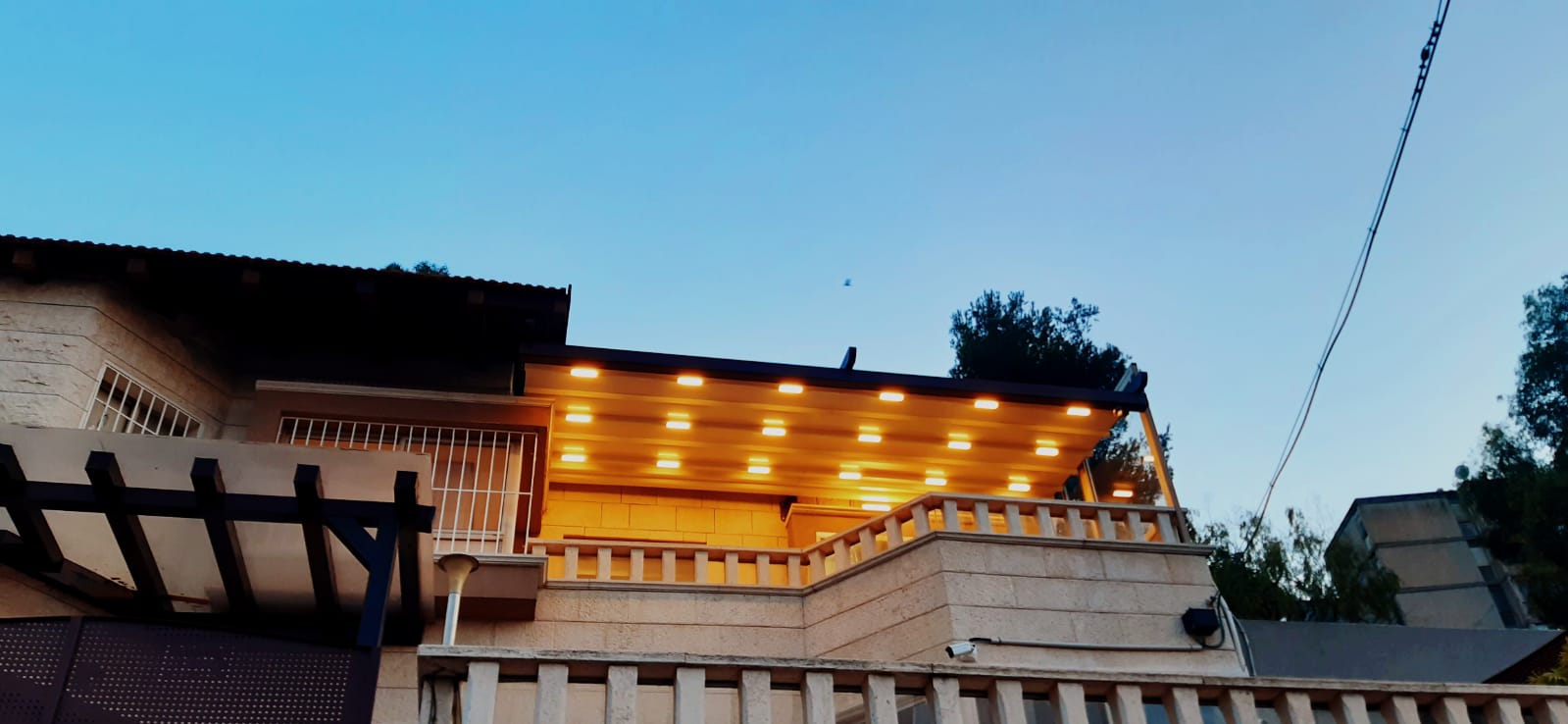

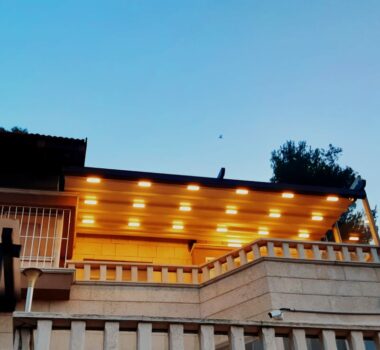

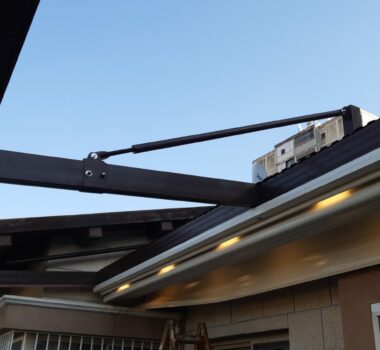

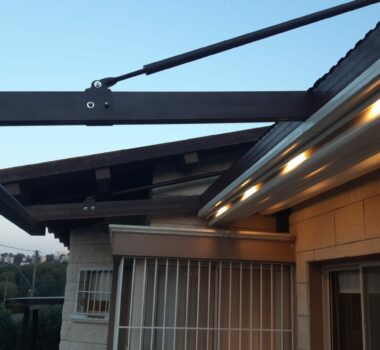

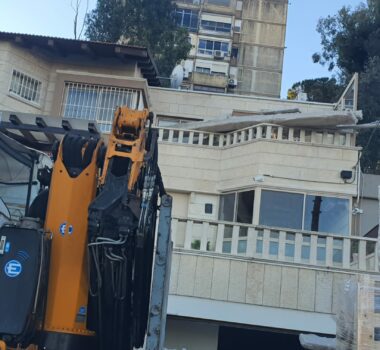

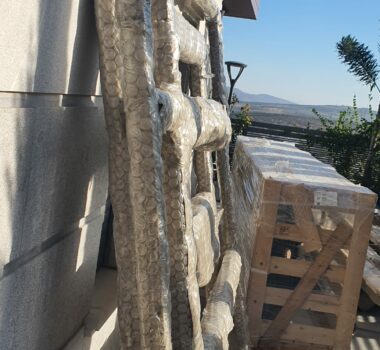

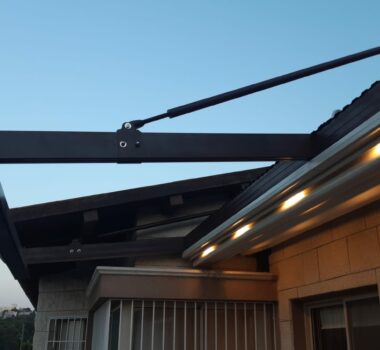

A new project – the installation of an electric pergola and balcony closure in Nazareth. The aluminum pergola can be folded to cover the balcony before winter. As you can see in the pictures, the pergola comes with Samsung LED lighting, making it a high-quality and stylish solution for winter closure and electric pergolas.
If you reside in the Nazareth and northern region, you have the advantage of enjoying the beauty of the north while also benefiting from Smart Pergola. Our company specializes in installing electric aluminum pergolas and winter closures.
Electric pergola in Nazareth עשויה מאלומיניום & P.V.C מתקפלת בלחיצת כפתור דרך השלט.
A balcony-attached pergola is a pergola that is suspended from the balcony and does not require legs or support columns. The pergola is supported by tension rods (super strong metal rods), giving it the appearance of floating. It is of super high quality and does not require any additional construction permits.
Closing a balcony in Nazareth using a suspended pergola is definitely a brilliant idea that can add a new functionality to your outdoor space.
If you're wondering how best to close a balcony, if you want a beautiful folding or retractable solution, you can purchase a Smart Pergola from our company. Closing options:
A balcony enclosure can be with a HEXA electric pergola or a folding electric PVC pergola model. On the side, there is an option for enclosure with a retractable electric glass system, sliding doors, or electric roller blinds.
All rain enclosures come with a warranty. You can get free advice by calling the number 0534665514 or by sending a message on WhatsApp with the measurements and photos from the area.
The balcony has played a significant role in Israeli architecture throughout its development. The use of balconies was common in Israeli construction due to the Mediterranean climate, where balconies were especially useful. With the beginning of Israeli architecture in the 1920s and 1930s, balconies were constructed in most residential buildings, and in rural settlements, it was common to build a balcony or even an entrance balcony.
The balcony served as a prominent and unique element, especially in Modernist architecture (the international style) in Israel. With it, a "balcony culture" developed, where a significant part of leisure time was spent on the balcony, often equipped with a small corner and suitable furniture. However, due to the increasing scarcity of housing space, many balconies throughout the country have been closed to expand interior living spaces.
Starting from the 1950s, many balconies were closed using shuttered windows or the popular invention of that time, the "Tirissul" (a combination of the Hebrew words for shutters and window). From this period onwards, especially with the wave of neighborhood construction in Israel, most apartments were built without open balconies. Instead, service balconies were constructed, often used to hide laundry facilities.
The phenomenon of closing balconies became more common in places where a balcony from the floor above was built over the balcony's surface. The Planning and Building Law even defined these areas as "covered areas," so closing these construction areas was also considered part of the indoor space, including closing balconies in Nazareth.
From the 1980s, "tiered" balconies began to appear. Tiered balconies are balconies built on the front of the building, not one above the other, but in a tiered manner. The most common appearance was in many residential buildings in the 1990s, with a typical structure of two-story residential buildings – one for the even-numbered floors and one for the odd-numbered floors where the balconies are located in different places. This allowed for more light and open balconies, preventing the possibility of closing them.
However, the tiered design created "architectural mutations" and disorderly and unaesthetic facades. Over time, various architectural elements appeared that came to disrupt, at least in terms of external appearance, the tiered design. A common element is non-constructive "false" balconies (balconies that are not part of the building's structure) that complete the lines of the tiered balconies on the front and create an illusion of double the number of balconies on the front of the building while maintaining an organized and symmetrical design.
In 2008, the law in Israel was changed, and today it is permitted to construct balconies without them being considered a primary residential area, including closing balconies in Nazareth. In new residential buildings constructed from 2008 onwards, balconies of up to 14 square meters per apartment (with an average of 12 square meters per apartment) are built one above the other.
